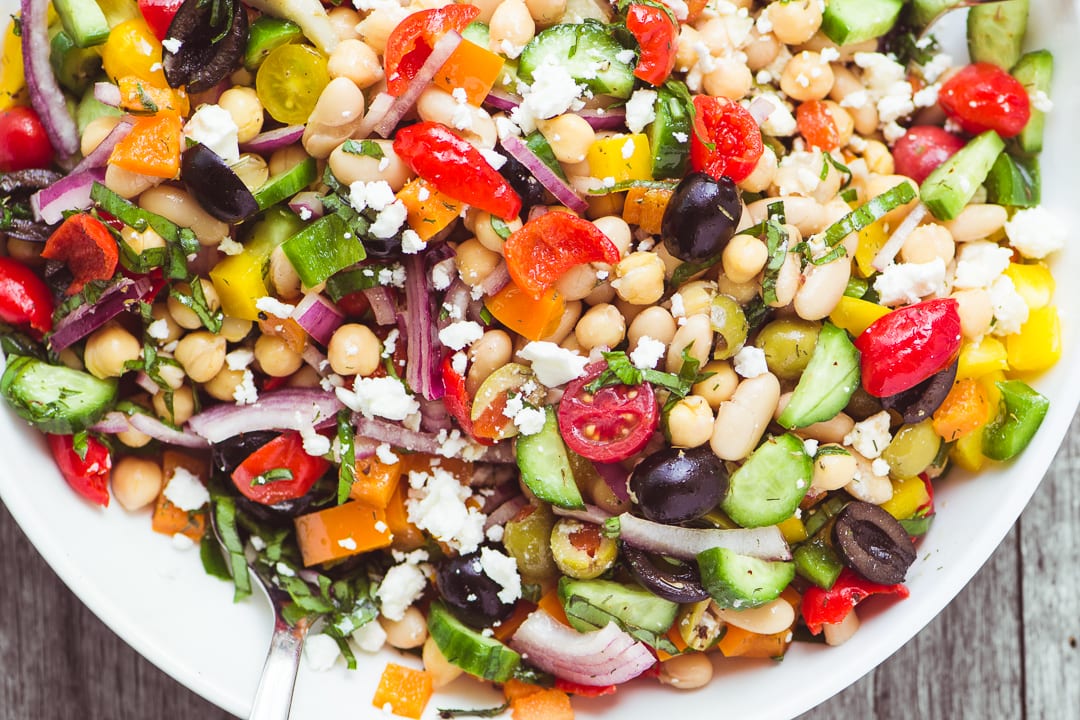
Have you ever passed on a salad for something more substantial? What we need to be aware of is that we are passing on something that is actually really good and nutritious for something that likely is not. A salad is generally known as mixed greens with a dressing. Salad is a term that originates from the Latin word “sal” which means salt, which is often an ingredient in the dressing. As far as the history is concerned, we know that salads were enjoyed by ancient Romans and Greeks. Aristotle first mentioned the health benefits of swiss chard in the 4th Century BC. It was around 1894 that iceberg lettuce was developed. The Caesar salad was created by Caesar Cardini, an Italian chef likely in 1924. It was in 1939 that a restaurant in Chicago opened the first salad bar. Since then, salads are served all over the world as appetizers, side dishes, and entrees.
Researchers have noted a link between eating lots of fruits and vegetables and lower risks of many diseases, particularly cancer. Salads are a good way to get those 5 servings of fruits and vegetables a day. The base of a salad is composed of a base of greens, be it iceberg lettuce, romaine lettuce, kale, arugula, or baby spinach. The green leafy vegetables contain nutritional benefits of fiber, vitamins, minerals, and phytonutrients. Foods with phytonutrients have antioxidant and anti-inflammatory benefits. Vitamins and phytonutrients are nutritionally dense and may naturally increase your metabolism. Here are some of the ingredients you can incorporate in your salads to reap the benefits:
| Ingredient | Benefits |
|---|---|
| Lettuce | Natural source of fiber which helps to reduce bad cholesterol (LDL), helps with weight loss, helps control blood sugar |
| Tomatoes | Contain lycopene which helps clear free radicals in the body |
| Carrots | Loaded with vitamin A and beta-carotene, help keep blood sugar levels under control |
| Bell pepper | Red is the most nutritious. Compared to green bell peppers, the red ones have almost 11 times more beta-carotene and 1.5 times more vitamin C |
| Broccoli | Source of anti-cancer enzyme sulphoraphane |
| Avocado | Help absorb protective compounds, phytochemicals, and lutein. Also raises HDL(good cholesterol) and lowers LDL(bad cholesterol) |
| Fruits (apple or pear slices, strawberries, blueberries, cranberries, pomegranates) | Full of vitamins |
| Nuts and seeds (sunflower seeds, chopped walnuts) | Good source of nutrients and antioxidants |
| Protein (eggs, meat, beans, edamame) | |
| Dressing (olive oil, herbs, spices, vinegar, lemon, lime, ginger) | |
| Herbs (basil, parsley, oregano) | contain antioxidants |
| Super sprouts | Adding sprouts to salad adds to the nutritional value of your veggies |
Now a word of caution, although salads are generally felt to be healthy, it is easy to make it unhealthy. Be mindful of the calorie content on salad dressings in particular. You may want to make a salad dressing at home instead. By adding too much salad dressing, croutons, or cheese, we can load on those calories.
Next time when deciding on a meal, pick a healthy, colorful, and visually appealing salad. It can be hard to choose a salad over other favorites but find ways to incorporate salads into your diet such as making ‘to go’ mason jar salads for lunch or hosting salad competitions. May, National Salad Month, is the perfect time make the effort to eat that salad!